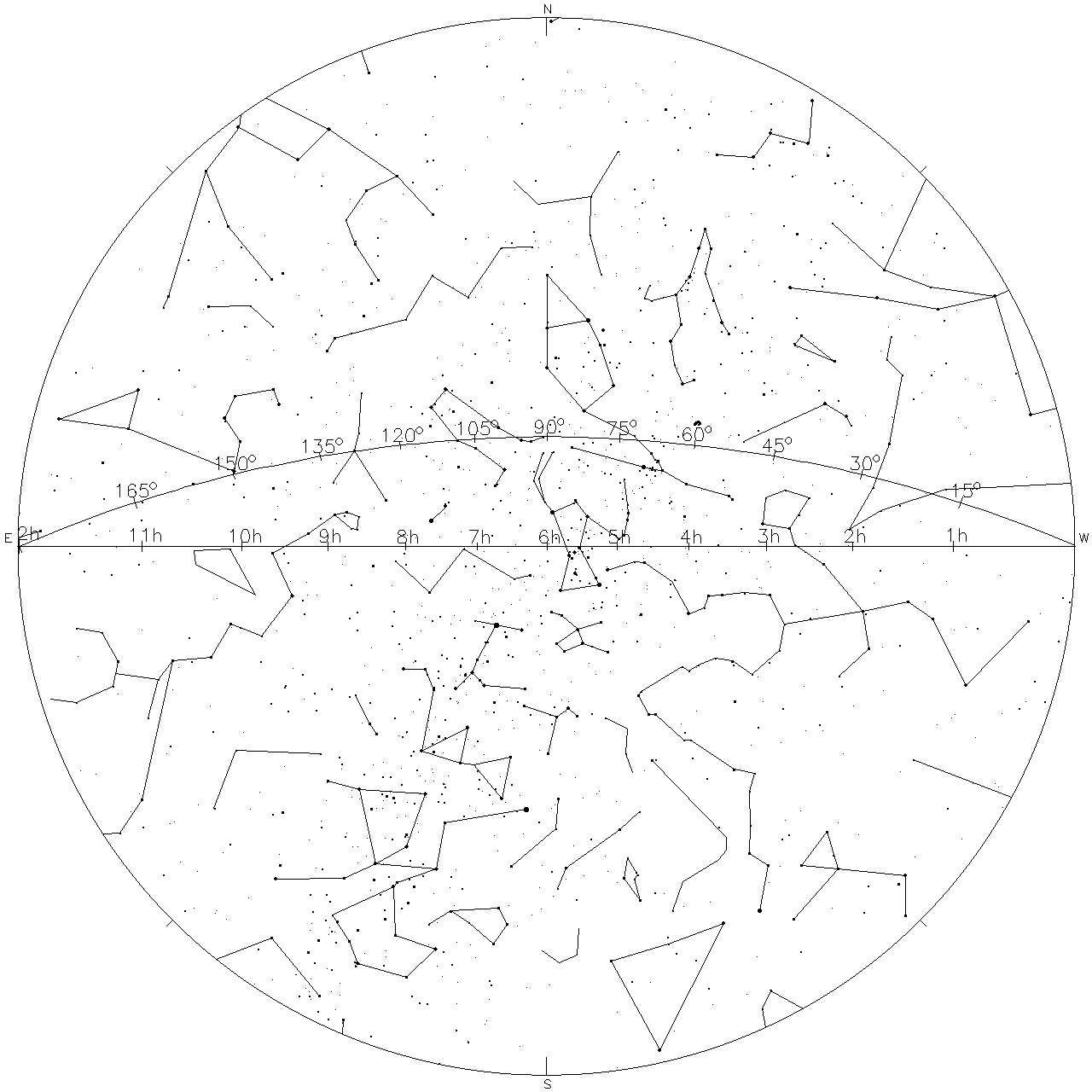
Caption: Sky map of the winter night sky. Click on the image to get square pdf version for approximately the same date.
Features:
- This how the night sky
looks as seen from the Earth's
equator
on Feb04
at 9 pm standard time.
- The horizon is the
circumscribing circle.
- The celestial equator
bisects the sky.
- The north celestial pole (NCP)
is at the top and the
south celestial pole (SCP)
is at the bottom.
- The equatorial coordinate
right ascension (RA) increases
going east along the celestial equator
from its zero point vernal equinox.
The vernal equinox
is both the point where ecliptic
crosses the celestial equator
and also the event when the
Sun traveling along the
ecliptic
crosses the celestial equator.
- The vernal equinox happens on about
Mar21.
- Right ascension is given in the
funny angle units of hours: 1 hour = 15°.
- The equatorial coordinate
declination (Dec) is measured
from the celestial equator
along
great circles that pass through
the
north celestial pole (NCP)
and south celestial pole (SCP).
- Because we are on the equator,
the celestial equator passes
through zenith.
- The ecliptic is the curve crossing
the northern part of the sky map
The ecliptic is the path of the Sun on the sky. It completes the path in one solar year.
- The ecliptic coordinate system
longitude
is also measured from the vernal equinox going
eastward, but in degrees.
Image link: sky_map_unlabeled_winter.pdf. File: Sky map file: sky_map_lat00_lon00_2013_02_04_21.00.00.html, sky_map_lat00_lon00_2013_02_04_21.00.00.gif.